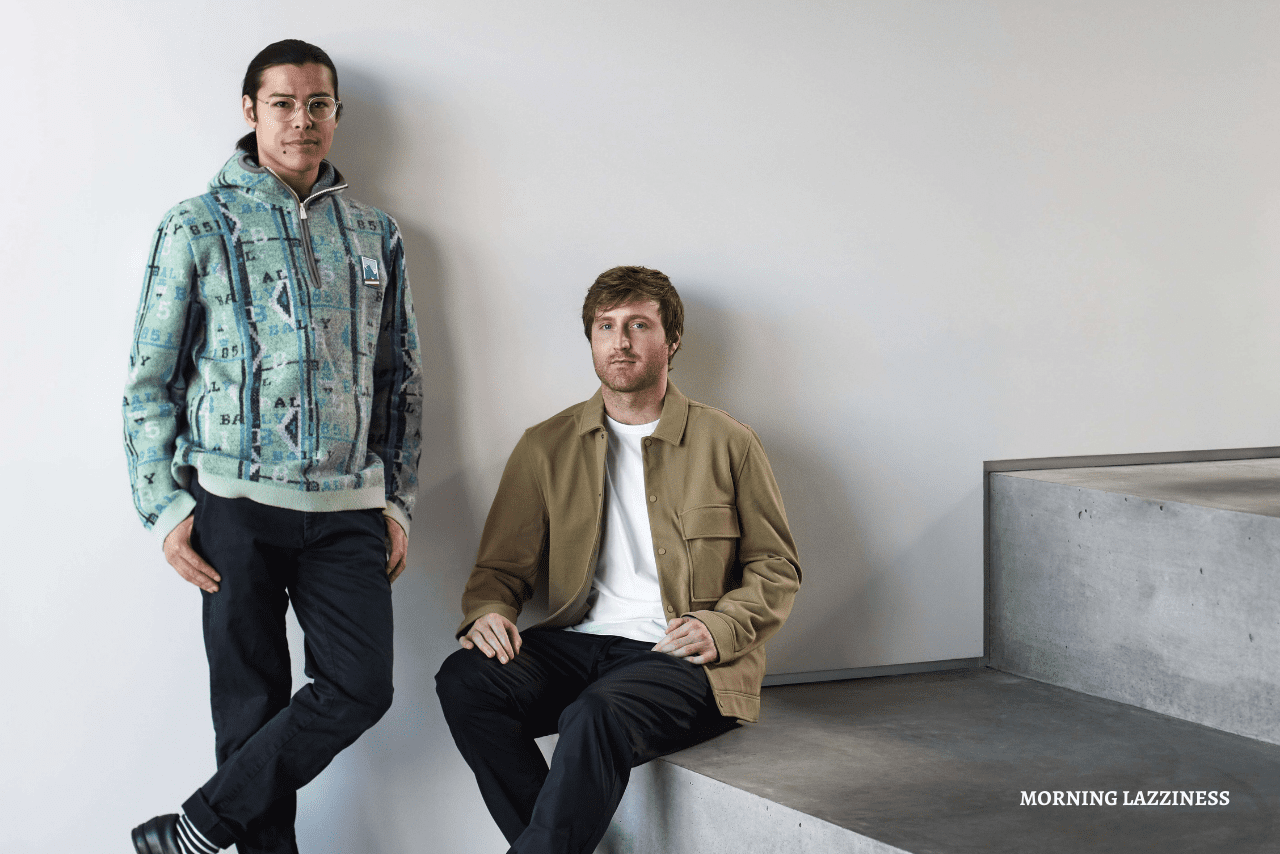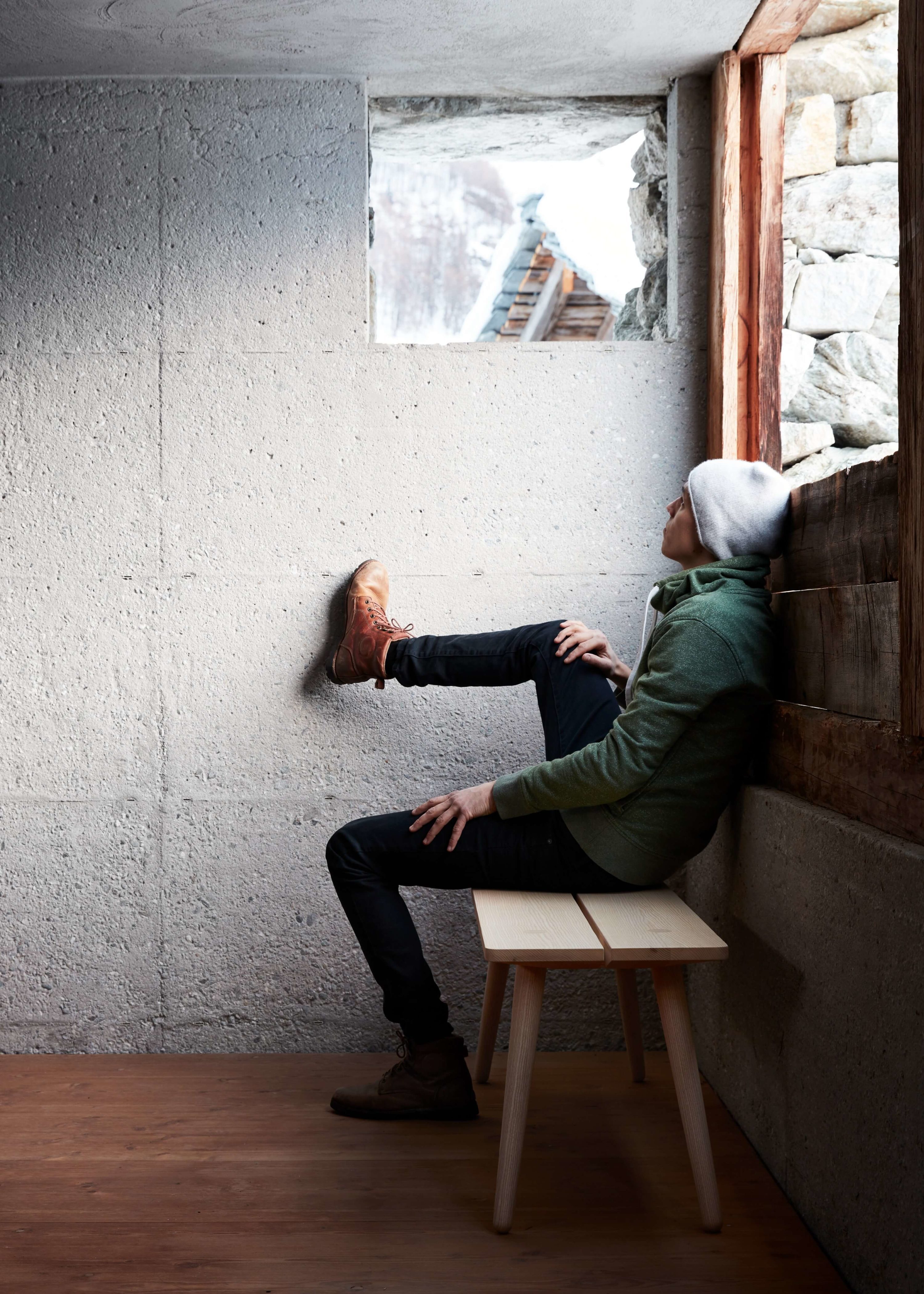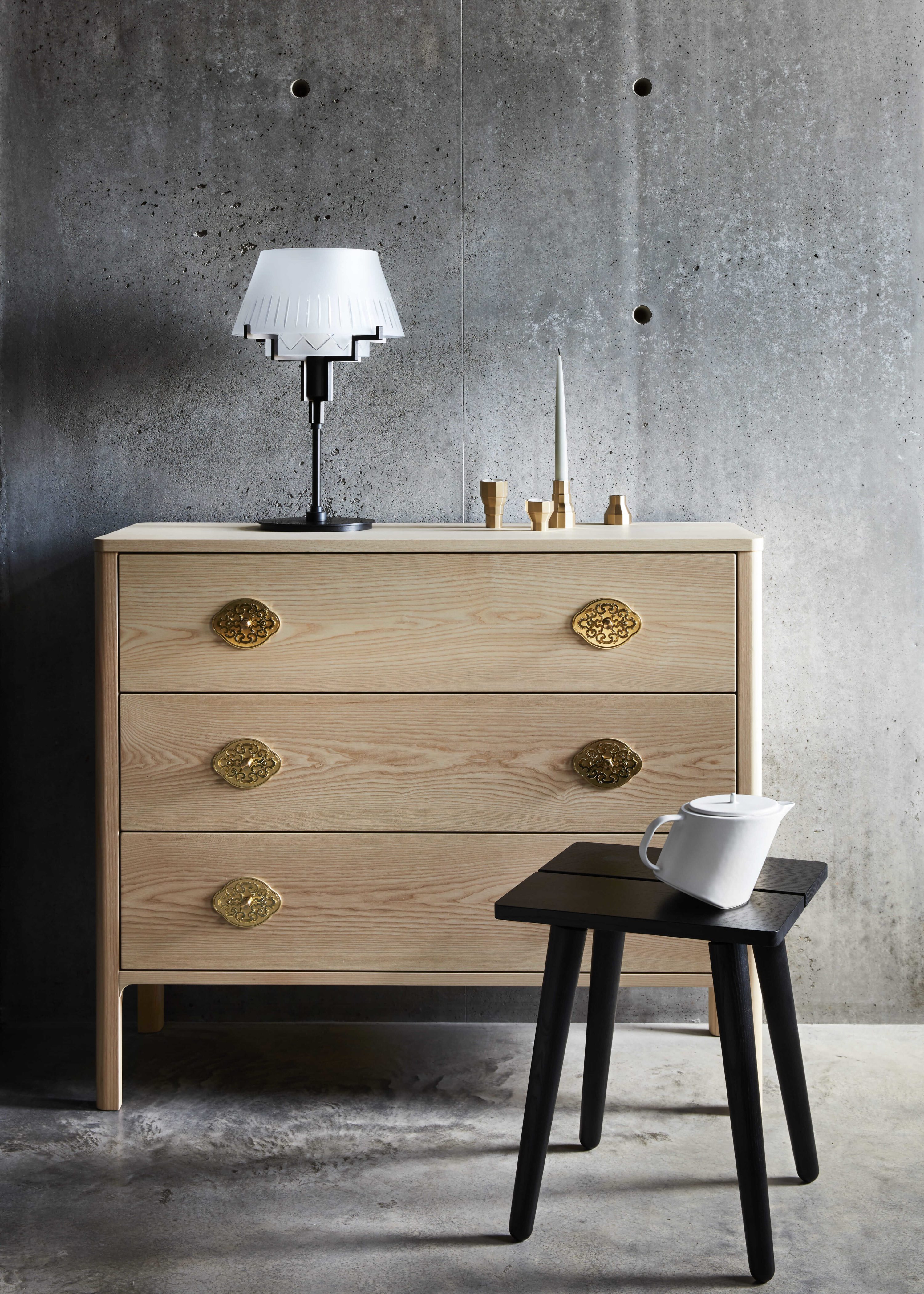Can you share your brand “Studio Seitz” backstory with us?
We are a New York-based design studio that is driven by the past but refined for today. Coming from a traditional Swiss family (Kevin), I have memories of a set of furniture my grandparents received as their dowry in the 1950s. These pieces, and even one from the 1800s, are still with my family today and work just as well as when they were first made. The idea of heirloom-quality furniture passed down through generations is one that certainly became the foundation for our studio’s design principles. We find great value in cultural objects that may be ubiquitous or often overlooked.
The biggest reward for us is to find a way to redefine how we may look at a seemingly mundane and sometimes dying tradition—reinvigorating its purpose and appreciation. We truly want to create objects that can stand the test of time. As a result, we partnered with the same workshop that produced those heritage pieces for my family—under the guise of modern simplicity.
Let’s jump to our main focus. When it comes to interior designing and home refurnishing, what percentage of people are likely to decorate their homes?
Everyone decorates their home whether they know it or not. They may decorate with style or function in mind; they may choose items for design reasons, economic reasons, ease of access, comfort, going with the known or to be daring—or any combination of those. Typically, our customers decorate their homes in a modern and sophisticated style that is natural, comfortable, and functional. They prefer modern, clean lines and sustainable materials. They want to buy pieces that mean something to them and can be more of a story than merely an object.
What makes your craftsmanship and furnishing different from others?
We always try to find a way to redefine how we may look at a seemingly mundane and sometimes dying tradition—reinvigorating its purpose and appreciation. We want to create objects that can stand the test of time. As a result, we partnered with the same workshop that produced those heritage pieces for my family—under the guise of modern simplicity. In this way, our pieces echo traditions from the past but exist in the present and always look toward the future.
Do you believe in sustainability? If yes, then how is your work contributing to making this world a better and clean place?


Sustainability is very important to us and a part of everything we do. But there are many ways to be sustainable. Aside from using sustainable materials whenever possible, we prioritize using quality, long-lasting materials to build furniture that you will want to pass down the generations. Additionally, we guarantee that these quality pieces are made by traditional craftspeople whose unparalleled passion is passed down from the generations before them—so that each piece of furniture can be too. We are committed to building on fading Swiss heirloom traditions blending with modernist principles with tactile simplicity, creating products with honest materials and distinct techniques. That quality has a wide and timeless appeal. In our throwaway culture, we want to make pieces that last for generations.
Where did you get the drive to continue even though things were so hard?
We are energized by the passion and commitment to excellence from generations that came before us. We value the superior craftspeople, both the people and their traditions. We learn the lessons of the successes and failures of the past to build a stronger future.
What do you think makes your company stand out? Can you share a story?
We love products with superior form and function. All of the items in our Heritage line are very important to us. We named the line for the Swiss municipality of Berneck, Switzerland, which dates back to 1795. This small yet industrious town has been home to artisans for hundreds of years—most notably for its ceramics. The Seitz family were one of many early craftspeople whose work influenced the region’s handicrafts industry. Our connection to the past, present, and future is what makes our pieces stand out.
Rank your top favorite home decorating products.
Some of our standout pieces in the collection include the Stabellenbank and Stabellenstuhl, or stable bench and stool, the elegant solid ash Kommode dresser, candleholders inspired by Alpine milk pails, the beautifully handcrafted Limen Teapot, and stand out lighting to highlight the special moments in every day.
Which tips would you recommend to your colleagues in your industry to help them to thrive and not “burn out”?
First of all, the thing that drives our passion is our commitment to making beautiful and sustainable products based on the excellence of Swiss craftsmanship’s tradition and quality. If we always come back to that, we can focus and stay afloat no matter what comes our way.
Second, we are very lucky that we are partners in work, life, and love. For us, being life partners gives us a strong base to handle anything. So, make sure to choose a good work partner.
How have you used your success to bring goodness to the World?
We work very closely with the craftspeople who have been part of our family for generations. We visit them often and stay in close contact. For us, keeping their traditions and trade alive and helping it thrive, is a way for us to do good. We also believe that our prioritization of sustainability is helping the world be a better place—by using sustainable materials and by reducing waste by making furniture and accessories people want to keep and pass through the generations.
What are your “5 things I wish someone told me before I started leading my company,” and why? Please share a story or example for each.
There is really only one thing I wish someone had told me—make sure you have the stamina to make it through the conceptual phase and into the production phase. It is easy to lose focus of the end goal when you get weighed down by all of the details necessary to run a business—any kind of business. Accounting, inventory, fulfillment, etc. can take a lot of time away from the creative process. When your business is based on a creative passion, the fun part is the creation; the less fun part is getting that done. All parts of creating a successful business make up the whole, and each step is as important as any other. Again, having a good business partner who can fill in with their strengths (and keeps you energized) is really important.
Can you share a few ideas or stories from your experience about how to successfully ride the emotional highs & lows of being a founder”?
Again, we have been really lucky to have our life partner be our work partner. That has been the secret of success for us. We met nine years ago and have been married for six of them. We now reside in Williamsburg, Brooklyn, with two hounds—inside of an old Babka Factory built in 1910 that is currently being renovated by us to be a live/work showroom for our studio. We do a lot of work together both professionally and in our personal lives. We go through the highs and lows together. Having the support of a partner is what helps us ride the waves. Beyond that, we rely on the amazing support of the tradition and craftspeople our company is based on. That is the foundation that never lets us down.
What would you tell yourself ten to twenty years ago that you wish you knew then?
I wish I could’ve told myself 20 years ago to worry less and take more risks. Everything always works out in the end.
Lastly, what’s one goal you’re looking forward to achieving in 2022?
We have many exciting new product releases for 2022, so we’re looking forward to a lot.




